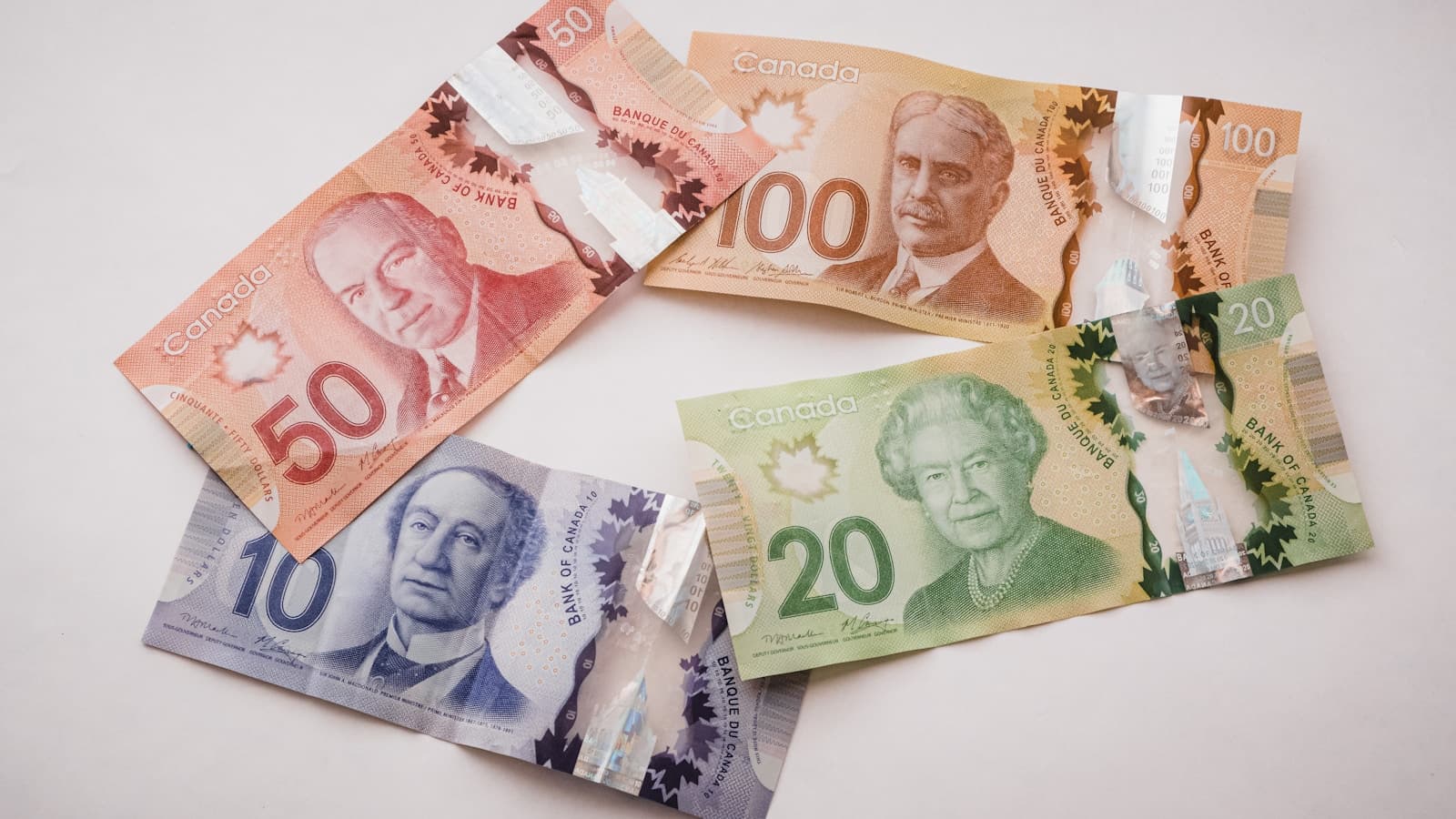Is it worth having a TFSA? The definitive answer is yes, it’s worth having a TFSA.
The exact reason you need a TFSA depends on your circumstances but the great thing about the tax-free savings account (TFSA) is that it benefits people from 18 through to 100+ years old. Unfortunately, many Canadians still don’t understand what a TFSA is or what to use it for.
This article provides 5 possible reasons you need a TFSA at different stages of life. It also gives concrete examples of how to use the TFSA, no matter your age or income, and exactly how it will benefit you and your family.
What is a TFSA?
First, in order to understand what the TFSA can do for you, you need to know some of the key features of the TFSA:
- Just like the RRSP, a TFSA is an account that can hold one or more different types of investments (GICs, bonds, stocks, exchange traded funds, mutual funds, etcetera).
- Investments inside a TFSA are allowed to grow and compound tax-free.
- Funds can be withdrawn at any time, for any reason, tax-free, making it a flexible way to access your money.
- Unlike the RRSP, if you withdraw funds from a TFSA, you earn that contribution room back the following year, providing ongoing access to tax-free savings.
- A TFSA with a designated successor holder or named beneficiary passes outside of the deceased holder’s estate, avoiding probate tax.
- TFSA withdrawals are not considered income and therefore do not affect taxable income and/or marginal tax rates.
- Anyone 18 or older with a valid social insurance number (SIN) can open a TFSA.

5 Good Reasons You Should Have a TFSA
1. Use a TFSA to Save for Retirement
Recall that one of the key features of the TFSA is tax-free growth, even when withdrawn. What exactly does this mean for you? It means:
- 100% of gains are allowed to remain in the account to compound, growing assets more quickly than if you had to withdraw funds for taxes.
- When funds are withdrawn, you get to keep every last cent.
Knowing this, it’s easy to understand that the TFSA was built for long-term investment growth and therefore, the number one reason to have a TFSA is to save for retirement.
Which is better, the RRSP or TFSA?
Both the TFSA and RRSP are excellent retirement saving accounts and ideally, they are used in combination.
Here are some common reasons you would use the TFSA in combination with the RRSP to save for retirement:
- You’ve used up all or most of your RRSP contribution room and want to save more for retirement or want the flexibility to access some savings if needed.
- You have an employer pension that lowers your RRSP contribution room, leaving little room for extra savings, and you know the pension alone will not be enough to live on.
- You want to retire early and therefore need to save as much as possible, preferably in tax-sheltered accounts.
Sometimes, using just the TFSA to save for retirement might be more advantageous:
- For those making less than about $50-70K, using the TFSA instead of the RRSP to save for retirement might be a better option. This is because the RRSP is most beneficial when you are contributing while in a high tax bracket and withdrawing while in a lower tax bracket. At lower incomes, this RRSP benefit is lost.
- The only exception in this case would be if your employer offers a RRSP matching program. In this case, it would be best to opt in 100% to the RRSP employer program and use the TFSA for additional savings.
Is there ever a scenario where you would only use the RRSP and not the TFSA?
Not that I can think of. The benefits of the TFSA are just too good. Any extra cash should go to the TFSA, even if it’s only $25-$50 a month to start.
If you are close to retiring or already retired, this benefit might have left you thinking the TFSA is a waste of time for you and that couldn’t be further from the truth. Read on.
2. Use the TFSA for Estate Planning
The other excellent reason people should use the TFSA no matter their age is for estate planning. A TFSA can be used to protect a spouse from financial hardship or to ensure money is left tax-free to beneficiaries.
How can the TFSA be used for estate planning?
The TFSA has several estate planning features and whether your TFSA holds a lot or a little, every dollar invested in a TFSA has value when it comes to estate planning. Here are 4 ways to use the TFSA for estate planning:
1. The TFSA can pass outside of the estate.
When a holder dies, the TFSA can pass outside of the estate, avoiding probate tax (tax owed on the total value of a deceased’s assets). This means all of the holder’s money inside of the TFSA will be distributed to the intended person, tax-free, leaving more money in their pocket instead of the government’s.
2. Assets within a TFSA can be distributed immediately.
When the holder dies and assuming there is a named successor holder or beneficiary, the assets within the TFSA can be distributed quickly or as soon as the will is notarized (if required) instead of waiting for probate, which can take several months.
This is a nice feature in that beneficiaries get their inheritance quickly (it’s always nice to receive money) but especially significant in cases where the spouse needs additional cash to supplement their income and/or when family need funds to cover funeral costs, moving expenses, pending bills and other costs associated with handling a deceased’s affairs.
3. Ownership of the TFSA can transfer to a spouse or common-law partner.
The holder can name their spouse or common-law partner as the successor holder, allowing their TFSA to transfer ownership at death. This gives their partner more tax-free savings in addition to their own.
This is a very significant benefit, especially if the surviving spouse needs funds to cover a decrease in household income with the death of their partner (like OAS), thereby preventing financial hardship. This is an excellent example of why keeping TFSAs topped up, especially as we age, is important.
Even if the spouse doesn’t need the funds, the other benefit is that the surviving spouse can allow the funds to continue to compound and grow tax-free, increasing the inheritance the deceased and surviving spouse may have planned to leave to their adult children or other beneficiaries.
4. Assets inside a TFSA can be distributed to a beneficiary tax-free.
The holder can name a beneficiary (one or more) for the TFSA and the total value of the assets on date of death will be distributed tax-free. This leaves more of the deceased’s money to the beneficiary and less to the government.
Note that a named beneficiary cannot take ownership of the TFSA. Once assets are distributed, the TFSA is closed. The only tax-owing (if any) would be any gains made after the date of death and before the TFSA was closed.
As you can see, using the TFSA to protect assets from tax and/or to support a surviving spouse are valuable benefits of the TFSA and useful no matter your age.
3. Use a TFSA to Manage Taxes
Withdrawals from the TFSA are tax-free AND they are not considered taxable income. This means withdrawals will not affect a person’s marginal tax rate. This is a huge benefit!
How can I use the TFSA to Manage Taxes?
Here are some common circumstances that make the TFSA ideal for managing taxes, especially for retirees:
Withdrawals for one-time purchases like a vacation, vehicle, home renovation or cash gifts will not affect taxes payable.
This is applicable to anyone, but especially useful for retirees who want to spend money on a vacation or otherwise, but don’t want to withdraw more taxable income from their RRIF or need more funds than their annual budget affords them.
In addition, any withdrawals can be re-contributed the following year (or the same year if you have the contribution room). This gives you a continuous supply of tax-free savings – another HUGE benefit.
For retirees, withdrawals won’t trigger claw back of OAS or GIS.
Whether you are making a large purchase or just need to supplement your income, being able to withdraw funds from your TFSA means this feature keeps more money in your pocket.
If you are deferring CPP until age 70 to get the enhanced benefit, funds from a TFSA can be used to supplement your income in the meantime, without affecting taxes payable.
There’s not much more to say about this except to point out that this is a very good reason to maximize your TFSA before you retire.
Funds from non-registered accounts can be moved to the TFSA when contribution room is available, sheltering investments from further capital gains and/or probate tax.
This is great for retirees who may be spending all of their annual income (good for you!) and don’t have anything left over to contribute to their TFSA.
While a withdrawal from an open/margin account is taxable, once the cash is moved to the TFSA it can remain invested to grow tax-free. Furthermore, funds can be moved strategically. For example, selling an investment with a capital loss is a great opportunity to move the cash to a TFSA, while there is no tax to pay.
There are plenty of strategies that can be used to save on tax and this is an excellent example of when seeking advice from a financial advisor makes sense.
Excess pension or RRIF income can be invested and tax-sheltered.
The TFSA has given retirees a place to invest and tax-shelter their money once contributing to the RRSP is no longer an option. Before the TFSA, there was no other tax-sheltered place for retirees to invest.
4. Use the TFSA for “Other” Financial Goals
While retirement, estate planning and tax management should be the main reasons to have a TFSA there are other ways to consider using it. It all depends on your circumstances and in the following examples, it’s worthwhile consulting a financial advisor first to determine whether using the TFSA is the best option for you.
Here are 3 ideas for alternative financial goals you might consider using a TFSA for:
1. ‘Short’ Long-term Goals
Here are some examples of ‘short’ (5-10 years) long-term goals that you could use the TFSA for:
- A home down payment
- A cash gift for your adult kids (early inheritance)
- A once-in-a-lifetime trip
- Extra funds for education (although this should be over and above a maxed-out RESP, since it offers a matching grant)
In the above examples, the assumption is that the TFSA is being used for future goals that are at least 5 years away (ideally longer) and that the TFSA holder has plenty of time and the cash/income to replenish their account for its main purposes: retirement, estate planning and tax management.
There is a caveat to the above uses of the TFSA though. Investments come with risk, which historically is smoothed out over time. In order to be sure that you have the cash to use for ‘short’ long-term goals, it’s important to withdraw funds from your TFSA about 3 – 5 years before you need it so that you’re not withdrawing cash when markets are down.
Essentially, your long-term goal turns into a short-term goal about 5 years out. Park that money in a high interest savings account (HISA) and it will be there when you need it.
2. To teach kids about money
Let’s assume you’re maxing out your RRSP, maxing out the RESP and don’t have anything more to contribute to your TFSA at this stage in life (because: child care fees, mortgage/rent, groceries, kids’ programming, etc.). This is very common.
In this case, while you have lots of TFSA contribution room, you could consider opening a TFSA that your child contributes to, maybe with a portion of their birthday money, money they get from odd jobs or from part time jobs they hold before they are 18. This would be a great way to teach them about market volatility, compound interest and the benefits of saving.
Once they turn 18, you can sell the investments and give them the cash to open their own TFSA.
Don’t forget though, that the priority for your TFSA is your own savings, so if you find yourself with (finally!) enough extra cash to start contributing to the TFSA for yourself, do it. If that means withdrawing your child’s money and putting it in a HISA sooner than you had planned, that’s ok. They have lots of time to build their own wealth and thanks to you, they’ll know how.
3. To hold an emergency fund
Holding a low, fixed interest HISA inside a TFSA is not recommended as you lose the main benefit of compound growth. Money inside a TFSA should almost always be invested in things like stocks, bonds and exchange-traded funds.
There is an exception though. If you have TFSA contribution room that you know you won’t be able to use up in the near future (again, because: child care fees, mortgage/rent, groceries, kids’ programming, etc.), then you could hold your emergency fund in a HISA within a TFSA. HISAs are issued a T5 each year, and interest is taxable and while you wouldn’t pay much tax if you held it outside of your TFSA, why pay any tax at all?
A couple of notes on this though. First, don’t invest that emergency fund money; use a HISA so that your capital is guaranteed and easy to access.
Second, if you’re anticipating receiving a lump sum of money like an inheritance or as you approach a stage in your life where you can afford to start investing in your TFSA, withdraw* the cash and keep it in a HISA outside of your TFSA (this is where an emergency fund is traditionally kept) and use that contribution room for powerful, invested, tax-free growth instead.
* Remember that you lose contribution room when you withdraw funds but get it back January 1st the following year. For this reason, the best time to make withdrawals is the end of the year, when possible, as it makes it less likely you’ll over contribute.
5. Use a TFSA to Ease Financial Strain
As inflation and interest rates rise, many are struggling to keep up financially. Higher mortgage payments and food and utility costs alone might put enough strain on a person’s budget to make it difficult to make ends meet.
In a case like this, it might make sense to withdraw some funds from the TFSA. Deposit cash in a savings account and use it to supplement income in the short term with the primary goal being to avoid debt. It’s not ideal, but better than credit card debt.
In these situations, your first step should be to speak with a financial advisor as they can help you work out the numbers and figure out your best financial move. They often have suggestions you might not have considered.
Final Thoughts on Why You Should Have a TFSA
Hopefully the reasons for opening a TFSA are more evident to you now. The key things to remember are that you can benefit from a TFSA at any age and you don’t need a lot of money to build wealth, just time.
If you have more questions about the TFSA, or want to discuss the best use of the TFSA for you, your young adult kids, your parents or grandparents, go ahead and book a free consultation with Frank Gasper. You’re guaranteed to leave the meeting with at least one concrete suggestion that will benefit you and your family.








